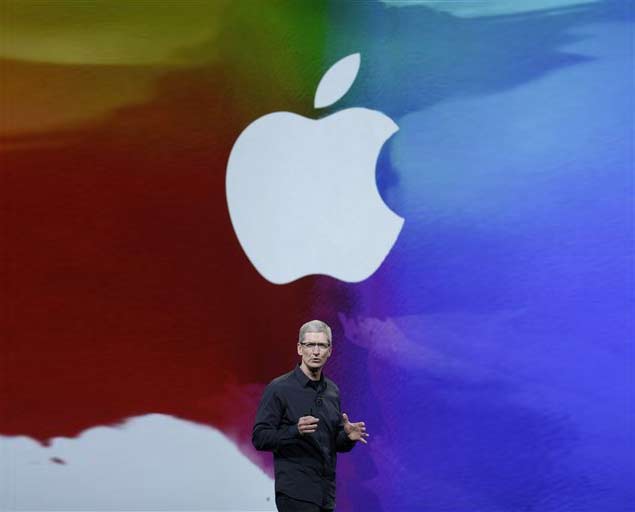T-Mobile USA will merge with smaller rival MetroPCS Communications Inc., PCS -9.21%a deal that would give the fourth-largest U.S. wireless carrier more scale as it tries to compete with the industry's leaders.
The move further consolidates the U.S. wireless industry, but in a way that is likely to be well received by regulators, who last year shot down T-Mobile's $39 billion deal to be acquired by AT&T Inc. T +1.22% to avoid reducing the ranks of national carriers from four to three.
It also puts pressure on No. 3 wireless carrier Sprint Nextel Corp., S +3.88% which had previously explored mergers with both MetroPCS and T-Mobile and now lacks a clear path for quickly adding scale.
The combined company wil be called T-Mobile and run by T-Mobile Chief Executive John Legere. MetroPCS customers will be moved over to T-Mobile's network gradually as they upgrade their phones, and the smaller company's network will be shut down in 2015.
The deal is structured as a reverse merger, meaning MetroPCS in effect will swallow its larger rival. That approach will give T-Mobile a publicly traded stock, which would give T-Mobile parentDeutsche Telekom AG DTE.XE +0.11% a new route to raise capital for its U.S. subsidiary, as well as a path to pare down its investment in the U.S. over time.
Deutsche Telekom has long looked to exit the slow-growing U.S. market, where it has lacked the scale of the industry's leaders. But the deal signals that the German operator has concluded it needs to build up its investment in the U.S. first to preserve the value of the unit. The company's CEO, René Obermann, said on an investor call that the company sees the U.S. market as attractive and is committed to growing here.
Deutsche Telekom shareholders will own 74% of the combined company. MetroPCS shareholders will own the rest and be paid $1.5 billion in cash, or about $4 a share. U.S. regulators will have to approve the transaction, which the companies said should close by the end of June.
The German carrier said it will write down the value of its investment in T-Mobile, which will reduce its net income by between €7 billion and €8 billion (between $9 billion and $10.3 billion) this year. MetroPCS shares, which rose 18% Tuesday on reports a deal was close, fell more than 7% Wednesday.
The merger of T-Mobile and MetroPCS, the fifth-largest U.S. wireless carrier, would create a bigger No. 4 player in the industry, though the combined company—with about 42.5 million customers—will still lag behind Sprint by number of subscribers. By that measure, the combined company will still be less than half the size of market leaders Verizon Wireless and AT&T, which each have more than 100 million wireless customers.
Still, the deal sends the U.S. wireless market in a far different direction than it appeared to be heading last year when Deutsche Telekom was trying to sell T-Mobile to AT&T. That deal collapsed amid opposition from regulators, leaving Deutsche Telekom scrambling to find a new way to squeeze value out of its U.S. subsidiary.
Rather than sell the company, Deutsche Telekom is now staying in the U.S., paying to merge T-Mobile with MetroPCS and girding for a costly upgrade of T-Mobile's network to a next-generation technology called LTE. Executives touted the benefits of the merger for that network expansion: MetroPCS and T-Mobile own complementary slices of the airwaves, while MetroPCS has already upgraded many of the cities its network covers to LTE. The MetroPCS network covers 102 million people in the U.S. and 9.3 million subscribers.
For consumers, the deal could be a double-edged sword. If the integration goes well, it could ensure that T-Mobile, which has introduced low-cost and innovative pricing plans in recent years, remains a strong competitor. But it would also eliminate another scrappy player, MetroPCS, which helped pioneer affordable, no-contract cellphone service in the U.S.
Last month, T-Mobile named a new chief executive for T-Mobile: Mr. Legere, 54, formerly head of telecom provider Global Crossing Ltd. It also struck a deal to sell rights to its 7,000 cellphone towers to Crown Castle International Corp. CCI +3.00% for $2.4 billion in cash.
MetroPCS Chief Executive Roger Linquist, 74, has been interested in an exit of his own, people familiar with the matter have said. Earlier this year, he was close to a deal for MetroPCS to be acquired by Sprint, but it fell through when it was rejected by Sprint's board.
A deal with MetroPCS will help T-Mobile bulk up but won't remove several big hurdles as it struggles to compete with much-larger rivals.
The combined company will remain the only national carrier that doesn't sell Apple Inc.'sAAPL +1.00% iPhone, a predicament that has contributed to losses of 1.7 million contract customers at T-Mobile in the 12 months to June 30.
And it will still need to make major investments to expand its LTE network across the country to match the offerings of Verizon, AT&T, and Sprint. MetroPCS's high-speed network covers markets in dense parts of the country like Southern California and the Northeast.
A drawn-out integration process could present an opening for other carriers—Sprint in particular—to pick off T-Mobile customers. But the deal would leave Sprint caught between a strengthened T-Mobile and still dominant AT&T and Verizon.






































